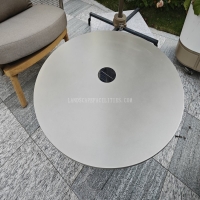Welcome to the website for landscape facilities products and knowledge.
How do manufacturers address the issue of material compatibility with recycling programs?
Manufacturers are increasingly prioritizing material compatibility with recycling programs to align with global sustainability goals. One key strategy involves designing products using mono-materials or easily separable components, ensuring simpler recycling processes. For instance, many companies now avoid mixed-material packaging, opting for single-polymer solutions like pure PET bottles.
Advanced sorting technologies, such as AI-powered infrared scanners, also enhance compatibility by accurately identifying and separating materials at recycling facilities. Additionally, manufacturers collaborate with recycling partners to develop standardized material guidelines, reducing contamination in waste streams.
Another approach is adopting "design for recycling" principles, where products are engineered with end-of-life recyclability in mind. Brands like IKEA and Patagonia lead this movement by using recycled and recyclable materials in their products. Chemical recycling innovations further address compatibility issues by breaking down complex materials into reusable raw components.
By integrating these strategies, manufacturers not only comply with regulations but also contribute to a circular economy, turning waste into valuable resources while minimizing environmental impact.
Related search:

Recommendation
Outdoor stainless steel table with solar-powered ambient lighting feature - excellent design.